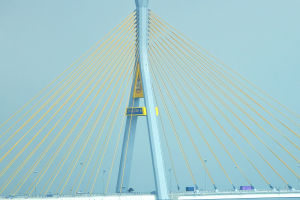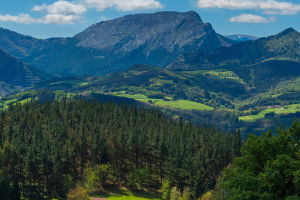Japanese Engineering Marvel
Kobe Port’s artificial island is a remarkable feat of Japanese engineering and urban planning.
Officially named Port Island, this man-made island lies off the coast of Kobe and plays a significant role in both the city’s economic infrastructure and as a modern urban space.
The Birth of an Engineering Marvel
Port Island was created in two phases: the first part in 1981 and the second in 1999. The initial goal was to increase Kobe's port capacity and handle growing international trade. Over time, however, the island evolved into a multi-functional space that includes commercial, residential, and recreational areas. Constructed from landfill and designed to withstand earthquakes, Port Island is a shining example of Japan’s capability to overcome natural limitations such as space scarcity.
The Challenges Behind The Island
Building Kobe's artificial island wasn't easy. One of the biggest hurdles was the sheer complexity of land reclamation in a region prone to natural disasters like earthquakes and typhoons. The island required extensive engineering innovation to ensure its stability on soft seabed foundations, particularly after the devastating 1995 Great Hanshin Earthquake, which heavily impacted Kobe. Engineers had to use advanced techniques like soil compaction and subsurface ground improvements to minimize the risk of liquefaction. Additionally, balancing urban development with the need for environmental preservation was a crucial challenge that had to be managed as the island expanded its commercial and residential zones.
The Future for Kobe Port Artificial Island
Port Island's future is all about sustainability and innovation. The Kobe City government aims to enhance the island’s role as a global hub for logistics while also promoting greener practices. This includes improving energy efficiency in port operations, reducing carbon emissions, and expanding smart infrastructure that utilizes AI and data for more efficient operations. The island is also expanding its residential and commercial spaces, aiming to become a tech innovation center while supporting sustainable urban growth.
Sustainability
Kobe Port Terminal Corporation has embraced sustainability on Port Island by improving energy efficiency and reducing fuel consumption in port operations. Additionally, Port Island has implemented waste-reduction programs and initiatives aimed at preserving local marine ecosystems.
Key Features of Port Island
Port Island is not just a hub for cargo; it also houses a range of facilities including hotels, museums, and conference centers. The island is home to Kobe Science Museum and the Kobe Animal Kingdom, a zoo where visitors can get up close to exotic animals.
Kobe Science Museum Tickets: About ¥600 ($4).
Kobe Science Museum Address: 7 Chome-7-6 Minatojima Nakamachi, Chuo Ward, Kobe, Hyogo 650-0046, Japan.
Kobe Animal Kingdom Tickets: Around ¥1,800 ($12) for adults.
Kobe Animal Kingdom Address: 7 Chome-1-9 Minatojima Minamimachi, Chuo Ward, Kobe, Hyogo 650-0047, Japan.
神戸ポートアイランドをポタリング|Exploring Kobe Port Island by bicycle during Sakura season
Video by tryworks
On the northern end, you'll find the futuristic Portopia Hotel, which is perfect for travelers who want to stay close to both the port and the city center.
Another draw is the Kobe Airport, located on a smaller adjacent island. This proximity makes Port Island a convenient location for travelers and businesses alike. The island is connected to mainland Kobe via bridges and the Port Liner, an automated transit system, making transportation smooth and hassle-free.
Portopia Hotel Estimated Cost: Starts at about ¥12,000 ($80) per nigh.
Portopia Hotel Address: 6 Chome-10-1 Minatojima Nakamachi, Chuo Ward, Kobe, Hyogo 650-0046, Japan.
Visiting The Island
Getting to Port Island is convenient, as it is connected by monorail to Kobe's city center and has easy access to Kobe Airport. For those planning a visit, tickets for the Port Liner monorail cost approximately ¥260 ($2), making it an affordable destination for travelers. Additionally, the island boasts a variety of parks and scenic views of the Rokko Mountains and Kobe's skyline.
Kobe Island is the perfect mix of industrial innovation and urban lifestyle showcases the best of what modern engineering and Japanese efficiency can offer.


